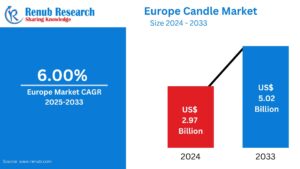In 2025, the mobile app development landscape continues to grow more competitive and innovative. Startups and businesses aiming to launch apps—whether stock trading apps, fintech solutions, dating apps, or taxi booking apps—often face confusion around mobile app development cost. Many misconceptions and myths still cloud the budgeting process, causing delays, overspending, or underinvestment.
Understanding the truth behind common app development cost myths is essential for any entrepreneur or product manager planning to build an app. In this article, we’ll debunk the most pervasive myths and provide actionable insights to help you manage your budget effectively while ensuring quality.
Myth 1: App Development Is Always Expensive
One of the most widespread myths is that building an app inevitably requires a huge budget. The reality is, app development costs vary widely depending on complexity, features, platform, and development approach.
For example, a stock trading mobile app development project will likely be more expensive than a simple taxi booking app due to the complexity involved—real-time data processing, secure transactions, and compliance requirements. However, thanks to modern frameworks like React Native and Flutter, development costs can be significantly reduced without sacrificing quality.
These cross-platform technologies allow developers to write code once and deploy on both iOS and Android, reducing the time and cost compared to building separate native apps. Similarly, offshore development teams, especially in regions like India, can offer quality development services at a fraction of the cost compared to agencies in London, UK, or the USA.
Myth 2: You Should Build Every Feature from Day One
Many startups feel pressured to launch a fully featured app immediately, which often inflates the stock trading app development cost or any other app’s budget. This approach not only delays the launch but increases risks if the market response is uncertain.
A better strategy is to develop a Minimum Viable Product (MVP), focusing on core features that solve the primary user problem. For fintech apps or dating apps, this might mean launching with essential functionality like user registration, basic trading tools, or matchmaking, and adding advanced features later.
This phased approach allows startups to validate their idea, gather user feedback, and optimize future development efforts, leading to more efficient budget use and faster time-to-market.
Myth 3: Design Doesn’t Impact Cost Much
Some entrepreneurs underestimate the importance of design and assume it contributes minimally to the overall app development cost. However, design—covering user interface (UI), user experience (UX), wireframing, and prototyping—plays a crucial role in user engagement and retention.
For apps like dating apps or taxi booking apps, intuitive and appealing design can make or break user adoption. Good design costs typically range between 30% and 40% of the total app development budget, depending on the complexity of the screens and animations.
Investing in professional design teams ensures your app looks polished and offers smooth navigation, which translates into higher user satisfaction and better ratings on app stores.
Myth 4: Offshore Development Means Poor Quality
Outsourcing development to countries with lower mobile app development cost in India and other emerging markets is sometimes viewed skeptically due to quality concerns. This myth often stems from past experiences with unprofessional developers or communication barriers.
However, many offshore development companies today maintain high standards, use modern project management tools, and employ skilled developers experienced in stock trading app development services, fintech apps, and other domains.
Choosing the right partner requires due diligence—review portfolios, check client testimonials, and conduct technical interviews. The right offshore team can deliver cost-effective, high-quality apps that rival those produced in London, UK, or US-based agencies.
Myth 5: Maintenance Costs Are Negligible
Many startups forget to budget for post-launch maintenance, assuming development ends once the app is live. Maintenance includes bug fixes, performance optimizations, security patches, compliance updates (especially vital for fintech and stock trading apps), and adding new features.
Ignoring maintenance costs leads to app degradation, security vulnerabilities, and poor user experience over time. Typically, maintenance can cost 15-20% of the initial development budget annually.
Planning for ongoing support upfront ensures your app remains competitive and secure, providing long-term value to your users.
Myth 6: All App Developers Charge the Same
App development pricing varies significantly based on location, expertise, and project scope. Developers in London, UK, or the USA typically charge higher hourly rates compared to those in India or Eastern Europe, but pricing isn’t the sole indicator of quality.
Experienced developers with strong portfolios may command premium rates but deliver projects faster with fewer bugs, potentially saving money overall. Conversely, choosing the cheapest option might result in delays, rework, or lower app quality.
Balance cost considerations with quality assurance, communication skills, and experience to select the best team for your project.
Myth 7: Technology Choice Doesn’t Affect Cost Much
The technology stack you select for your app development impacts both the initial cost and future scalability. Native development for iOS and Android separately tends to cost more, while React Native app development costs or Flutter app development cost are generally lower due to shared codebases.
Cross-platform frameworks accelerate development and ease maintenance, but might limit access to some device-specific features. Understanding your app’s functional requirements will help you decide the most cost-effective technology.
Myth 8: App Development Cost Is Static
App development is a dynamic process. Requirements may evolve based on user feedback, market changes, or business pivots. Expecting the cost to remain fixed from the start is unrealistic.
Flexible budgeting, clear communication, and agile development methodologies help manage evolving scopes without ballooning your budget unexpectedly. read more
Final Thoughts: Know What You’re Paying For
App development costs in 2025 depend on many factors, and busting these myths allows startups and businesses to plan smarter. Whether you’re looking at stock trading app development cost, fintech app development cost, or simpler apps like taxi booking and dating apps, transparency and education are your best tools to avoid pitfalls.






